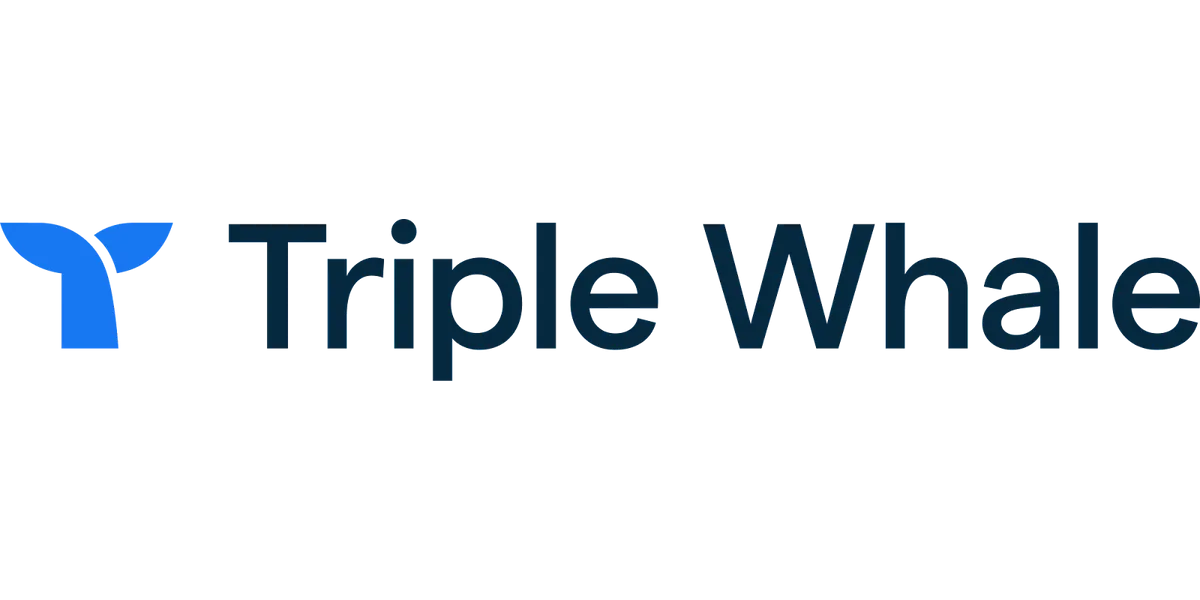
Starting From
- Free: $0/month (core tracking features)
- Starter: $149/month (multi-touch attribution + summary dashboards)
- Advanced: $219/month (product, creative, cohort analytics)
- Professional: $449/month (SQL access + Marketing Mix Modeling)
PROS
- Shopify-native with strong first-party attribution
- Real-time dashboards and creative performance tools
- AI-driven insights, anomaly detection, and predictive trends
- Fast setup—pixel install takes minutes
CONS
- Shopify-only—no WooCommerce or Magento support
- Pricing scales fast with GMV—budget-conscious brands may struggle
- Amazon data and product-level reports can lag
- Not a full BI tool—less customization than Looker or Amplitude
Triple Whale Review
Heads up: This Triple Whale review contains affiliate links—clicking through may earn me a commission. I only recommend tools I genuinely use or endorse.
Triple Whale is more than just analytics—it’s a command center for Shopify brands. From attribution clarity to creative optimization and LTV predictions, it arms DTC brands with the intel to move faster, market smarter, and win more profitably. In a post-iOS14 world where signal loss is the norm, Triple Whale’s pixel and dashboard restore the clarity brands crave.
Table of Contents
Quick Answers
- What is Triple Whale? A Shopify-first data platform for attribution, creative analytics, and profitability insights in real time.
- Who’s it for? DTC brands and agencies using Shopify who want clean attribution and AI-driven marketing clarity.
- Key features? Pixel attribution, Live Orders dashboard, Moby AI, Creative Cockpit, cohort and LTV breakdowns.
- Compared to alternatives? Easier than Looker or GA4, deeper Shopify insights than Northbeam or Elevar.
- Easy to set up? Yes—pixel takes 5–15 minutes, no engineers needed.
- Integrations? Shopify, Meta, Google Ads, TikTok, Klaviyo, Amazon, and more.
- How much? Free basic plan; paid tiers from $129–279/mo; scales with revenue.
- Pros & cons? ✅ Smart attribution + creative analytics. ❌ Shopify-only; ❌ Price grows with store size.
- Worth it? Absolutely—if you’re serious about scaling on Shopify and want data you can actually act on.
- Where to get it?
Start with Triple Whale →
1. Features & Capabilities
Triple Whale’s foundation is its first-party attribution pixel—a custom Shopify-integrated pixel that gives accurate, post-iOS14 tracking. Instead of relying on delayed or aggregated platform data, it attributes conversions using your own site activity, giving clearer multi-touch and channel ROI.
The real star of the show is the dashboard: real-time metrics, orders flowing in live, and easy drilldowns by channel, SKU, campaign, and even creative assets.
- Live Orders: a running feed of Shopify transactions with full attribution tags.
- Creative Cockpit: visual leaderboard of ad performance by image, video, or copy variation.
- LTV + cohort reports: track revenue and retention over time by source, product, or segment.
- Moby AI: anomaly alerts and “reasons why” behind sudden spikes or dips.
- RFM segmentation: auto-create groups like high-value recent buyers for Klaviyo sync.
Triple Whale also integrates with Amazon, Google Ads, Meta, TikTok, Klaviyo, and more. SKU-level profitability lets you see which products fuel your best customers. It’s not just about metrics—it’s about insights that actually change how you allocate spend and scale operations.
2. Pricing & Value
Triple Whale offers flexible pricing based on your store size and desired features:
Free
$0/month
- Channel performance & attribution models
- 12-month lookback
- Supports up to 10 users
Starter
$149/month
- Triple Pixel attribution
- All channel integrations
- Influencer & affiliate analysis
Advanced
$219/month
- Product, creative, and cohort analytics
- Subscription & total impact attribution
- No-code dashboard builder
Professional
$449/month
- Marketing Mix Modeling
- Predictive budget simulation
- SQL editor & BI tools
Pricing adjusts based on GMV—making it affordable for small brands but potentially expensive at scale. However, the ROI from better decision-making often pays back the cost quickly.
3. Ease of Use & Onboarding
Setup is a breeze: most brands are up and running in 15 minutes. The pixel install is guided step-by-step, and integrations are plug-and-play. No engineers required.
The interface is tailored to Shopify merchants—clean, labeled, and intuitive. Dashboards can be customized per user or role. Even agency clients can be managed across workspaces without confusion.
Advanced features like cohort filters or product-level performance can take time to explore, but they’re well documented and supported via chat or onboarding walkthroughs.
4. Case Studies & Reputation
With over 30,000 brands onboarded—including Olipop, Hexclad, and Jones Road—Triple Whale has traction among both scrappy startups and 8-figure scaleups.
One supplement brand saw a 27% decrease in CAC by reallocating budget based on creative performance data. A pet supply DTC used Moby AI to catch a broken campaign mid-launch, saving $8K in misfires.
G2 reviewers rank Triple Whale 4.6/5, praising support, UX, and attribution clarity. Some note “data lag” with Amazon, or wish for more customization—but few dispute the raw usefulness.
5. Customer Support & Reliability
Support is responsive, chat-based, and praised for proactive help. Onboarding includes recorded and live sessions, Slack community invites, and custom check-ins for Enterprise users.
Platform uptime is solid. Dashboards update in near real-time, and while some Amazon or deep SKU analytics may have minor delays, overall stability is high. The team regularly ships updates and new AI features, signaling strong long-term investment.
6. Triple Whale Review Summary & Final Rating
Pros
Cons
Final Rating: ★★★★☆ (4.5/5)
Triple Whale is the go-to analytics platform for Shopify stores that want more than just numbers—they want clarity, speed, and action. It’s not the cheapest tool, but it delivers on its promise: helping you grow smarter. A clear winner for any brand serious about scaling on Shopify.
